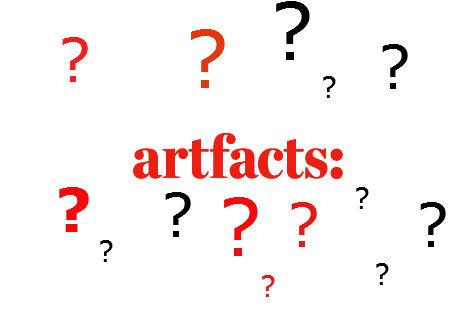The Australia Council ArtFacts reveals important information about visual arts but leaves some major questions unanswered.
Creative use of statistics is a lesson every politician learns at their initiation. The media are very good at it too. And as for the pollsters, they can show real genius at constructing ‘when did you start preferring Kev to Jules’ questions.
However, the Art Facts: Visual Arts stats just published by the Australia Council are mostly pretty unvarnished, though I have to say that my favourite is the inference we are led to draw from learning that craft is more popular than Twitter (3.2 million craft makers vs 1.2 million Twitter users).
The way the stats have been presented is clear and attention grabbing and is very important as reference material for all sorts of purposes. It is the second in the Art Facts series after music and is mostly drawn from other authoritative material published by the likes of the ABS and more particularly from the most recent research done by our eminent cultural economist Professor David Throsby assisted by Anita Zednick.
From Art Facts we learn the good news that visual art and craft is one of the most popular cultural activities in Australia, surprisingly even more so than music. 43% of children participate in art and craft activities outside of school hours and attendance at galleries is on the rise with almost 40% of Australians attending a visual arts and craft event. And yes it even outstrips going to the footy in popularity by a million.
Following the dollars, 2007 seems to have been a bumper year for art sales. Despite the Global Financial Crisis knocking everything for six including art investment, sales are still quite strong at $95 million in 2012. But most artists are not the ones earning the millions. Can you imagine sustaining a mortgage and a family on an income of $34,900 a year? The bad news is that artists are still metaphorically starving in garrets. It still shocks me to be reminded that although visual artists are some of the best educated in the community (90% undertaking formal training to become a professional artist) and on average spend 42 hours a week across both arts and non-arts work, they survive on such small crumbs of the biscuit. This may explain why so many are abandoning this form of work for the more secure and remunerative ones in the creative industries like graphic and fashion design, urban and landscape design, advertising and media.
The OzCo says Art Facts is a work in progress so I’d like to put up my hand up for them to find out some other stuff like: what is the contribution of the visual arts to Australia’s GDP; in which other industries are artists working and what is the scale of their creative contribution; how much income do artists forgo in donating their artwork for good causes, or allowing their work to be reproduced for free, or volunteering their time to keep ARIs running? There is a hidden economy which needs to be made apparent when assessing what is the total dollar value of artists’ contribution to Australia. Not to mention the thorny subject of how value is put on things which can’t easily be measured like emotional enjoyment, intellectual stimulus, spiritual inspiration and having a sense of who we are.
One very important characteristic of the visual arts economy is that such a high percentage (87% of visual artists and 92% of craft practitioners) operate as freelance or self employed individuals. This means that they don’t receive the kind of benefits that employees working for others take for granted such as sick leave, maternity leave and employers’ superannuation contributions. The need for this to be dealt with by government was one of the matters raised by the National Association for the Visual Arts (NAVA) when Labor’s 10 year national cultural policy vision was published in ‘Creative Australia’, still leaving artists to fend for themselves in these areas.
This means that for most artists, earning income from a variety of secondary sources becomes all the more important. For example, according to the stats in 2011-12 Viscopy distributed $1.7 million in copyright payments to members with the average payment being $1,100 per artist. In the rush to make all intellectual property free on the net, users forget that artists rely on copyright payments as a source of support. Equally, when some auction houses and private galleries resist the miniscule 5% payment to artists from the resale of their work, they are threatening the viability of artists being able to maintain a sustainable practice.
Some other interesting things we would like to know require quick responses and on-going research like how many private galleries have gone to the wall since the GFC. The glass half full view is that galleries are closing because of a change in how people buy and sell. As an example, the Etsy model of on-line selling of craft has been a gigantic success and increasingly artists are using platforms like Pinterest, Facebook and Twitter to build their networks.
The limitation of statistics is that they tell you what but not why. For example, despite having an economy envied around the world, our government only contributes 0.084% of GDP in funding for the arts while other new world cultures like Canada give 0.156% and little New Zealand 0.198%. It is a statistical fact but why?





